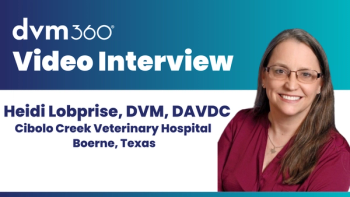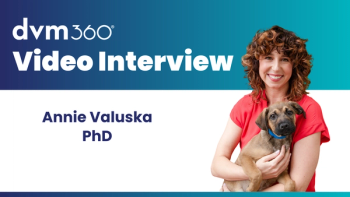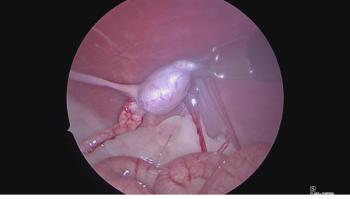
- dvm360 December 2020
- Volume 51
- Issue 12
New data-driven insights help you prepare for a strong future
New insight illuminates the path veterinary practices should take to improve patient care, client satisfaction, and your bottom line in 2021 and beyond.
As 2020 inches toward a close, many of us are considering what the future might hold for the veterinary profession. The latest American Veterinary Medical Association (AVMA) economic research uncovers a detailed sketch of what we might expect—both in the upcoming year and over the next decade.
There’s good news in what we project: growing animal populations, rising salaries, and positive changes in client attitudes toward pets. The data serve as a practical roadmap for veterinary professionals and businesses to draw on. Use it as a foundation to base strategic and forward-thinking business decisions that will enhance your opportunities for success.
What the data show: An overview
Incorporating data from a wide range of sources, AVMA’s projections encompass these categories: veterinarian population, species focus, and average salary; livestock and pet populations; owner demographics; demand for veterinarians; and household view of pets as family. The insights are based on a new veterinary workforce model that allows us to make forecasts on the supply and demand of veterinarians and veterinary services.
Here are some key projections:
- The number of active veterinarians in the U.S. is expected to exceed 123,000 by 2030, up from 116,000 in 2020.
- The number of companion animal veterinarians is expected to increase substantially by 2030, and small increases are anticipated for food animal, equine, and mixed animal veterinarians.
- The average starting salary for companion animal veterinarians is expected to rise from $88,000 in 2020 to $102,000 in 2030.
- In the public sector, a net gain of veterinarians will be driven by more people working in higher education, industry/corporate, and nonprofit practice.
- The US dog population is expected to increase from 85 million in 2020 to over 100 million by 2030.
- The cat population is expected to grow from 65 million to over 82 million by 2030.
- The proportion of US households owning a dog is expected to grow from 38% in 2020 to 45% by 2030.
Connecting the dots: Practical applications
While the research offers a basis to understand major trends and patterns, whether and how practitioners use this information is key to its real world value. First and foremost is understanding the practical implications of these insights. You can then harness that knowledge to implement new or improved programs and strategies to enhance patient care, build client relationships, and boost business success. Here are some examples.
Wellness visits for dogs
AVMA projections show the share of dogs receiving wellness exams has grown rapidly, from 78% in 2011 to 90% in 2016. That number is expected to grow more slowly through 2030, ultimately reaching 96% of dogs.
What it means: This gives us at least 2 pieces of really practical information. One, it tells us that most dogs are getting the preventive care they need to live long and healthy lives. This is excellent news! It shows that our efforts to educate pet owners about the value of regular veterinary care are having a real influence on the care their pets receive. It also tells us that wellness checks as an area of service represent only limited growth potential over the next decade, because a relatively high proportion of the dog population already receives them.
What you can do: Veterinarians who see a high proportion of dogs should be exploring other ways beyond wellness visits to provide value to patients and clients. This can take many forms. It could mean
Wellness visits for cats
For cats, on the other hand, wellness visits are expected to continue growing through 2030, reaching nearly 80% (up from around 65%). This makes them an area where you may want to continue focusing for your feline patients. If you don’t already see a large number of cats, this could be a possible growth area. The AVMA has a
Client communication
Visibility into changing household demographics and attitudes provides important insight into our current and potential client populations. Data show that most Americans consider their pets to be family members, and that this trend will continue. For dogs this number is expected to rise to nearly 96% by 2030 (from 86%) and for cats to 84% (from 80%).
What it means: Our clients love and cherish their animals. This positive change in owners’ relationships with their pets could imply an increase in the demand for pet health care.
What you can do: Understand the characteristics of the households in your area, and use the knowledge to inform your marketing and communication strategies. How clients view their pets is 1 piece of the equation.
Use this information—available on a state-by-state basis—to home in on what your clients need and value most and make sure that you, as the veterinarian, are doing everything you can to meet those needs. Every interaction we have, whether on social media or face-to-face with clients in the exam room, is an opportunity to build and strengthen relationships. Understanding client priorities and attitudes is the first step in addressing them.
A deeper dive: Explore the data online
You can dig deeper into these data via an
Dr. Matthew Salois worked in private industry, government and academia before joining the AVMA in 2018 as director of veterinary economics. From 2016 to 2018, he served as director of global scientific affairs and policy at Elanco Animal Health, supervising a team of scientists in veterinary medicine, human medicine, animal welfare, economics and sustainability. Before joining Elanco, Dr. Salois was chief economist with the Florida Department of Citrus, where he led economic and market research activities to drive industry growth and profitability for citrus growers. He previously served as an assistant professor at the University of Reading in the U.K., and also has held positions with the University of Florida and University of Central Florida. Dr. Salois earned his PhD in Food and Resource Economics from the University of Florida, and holds an MA in Applied Economics and a BS in Health Services Administration from the University of Central Florida.
Articles in this issue
about 5 years ago
Endoscopy and respiratory disease in horsesabout 5 years ago
A few of our favorite things (2020 edition)about 5 years ago
The doctor and the brickabout 5 years ago
Bond Vet raises $17 million towards veterinary hospital expansionabout 5 years ago
FDA approves weight loss management drug for cats with CKDabout 5 years ago
Failing to meet their minimum environmental needs is killing catsabout 5 years ago
Gastrointestinal motility disorders caused by esophageal diseaseabout 5 years ago
Licking wounds after pet euthanasiaabout 5 years ago
Striving to pay it forwardNewsletter
From exam room tips to practice management insights, get trusted veterinary news delivered straight to your inbox—subscribe to dvm360.




